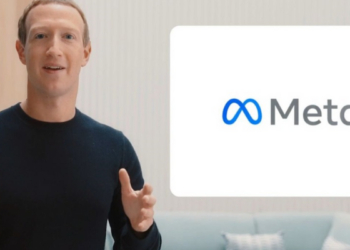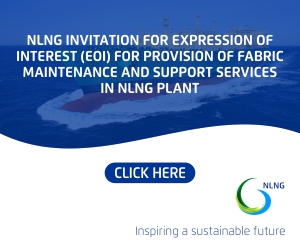In my work with a few start–up web–based business platforms, I typically have budding entrepreneurs reach out to me, excitedly explaining their lofty platform-based ideas and how they believe a Mobile Application, and justifiably so in certain instances, may not only revolutionize a certain niche sector of particularly the Nigerian economy but change it forever.
It is of course, easy to imagine themselves the next Mark Zuckerberg, Jack Dorsey, or Kunle Soname of Bet9ja, until a request for access to a Minimum Viable Product (MVP) and its current adoption numbers, and suddenly the hems and haws begin.
Worst still, is when inquiry is made into how much value, spending so much to get this Mobile App from Ideation to working prototype is there to be had when such and such, already existent platform(s), can quickly transition into your intended niche market by scaling their extant product to offer what you may already be proposing, and the haws get even louder (no pawn intended, I think…)
Thus, in this article, we will understand some of the more critical facets of an MVP, particularly should you be fostering ideas for a revolutionary web-based or mobile-based business or application.
We’ll explore their importance in your start-up’s attempts at fundraising to build a market–ready product, and more importantly, how www.Pedxo.com can help.
A Minimum Viable Product often refers to a is a version of a product, web-based or otherwise, with just enough features to be usable and or physically tested by early adopters, more particularly friends, associates and customers wherever you might find them.
These provide your business with feedback on what’s working for them and what is not, all for future product enhancement purposes.
As can be imagined, the overall objective of an MVP is to collect valuable feedback as quickly as possible to iterate and consequently improve the product’s features, offerings, and sometimes, to some small extent, its look and brand presentation.
Though not limited to these only, some advantages an MVP affords you include:
- Reduces risk: By releasing a product with a limited set of features, you can reduce the risk of developing a product or service that no one really needs or needs. If your intended market cannot clearly understand how your Mobile App will benefit them then perhaps neither will your potential investors.
- Shorter Feedback Loop: Let’s face it, Mobile Apps, for all intents and purposes, are expensive to build, and probably cost even more to maintain. Thus building, in most cases, a web-based MVP with a quick feedback loop allows for all the trial and error necessary. The sooner you get feedback from your handful of users, the sooner you can start improving your product before designing a more expensive product.
- Saves time and money: By building a web–based MVP, you save time and a considerable amount of money by avoiding the need to develop features your competition already has, your users don’t like, or worst still, have no need of.
Some critical questions your MVP must answer to pique investors’ interest enough to help you pivot into a market-ready Mobile Application:
- Pain Points: Investors always like to see a pain point, much different from the ones already answered by many other platforms, that your MVP answers. The more pain points and hiccups presented by other platforms your idea eases, the more likely a higher adoption rate your service may enjoy, which is good for your business and investors alike.
- Easy of Use: It goes without saying, should your idea be a complicated one, or your proposed platform require one too many clicks, or taps in the case of a mobile device, before a process or objective is achieved then adopters will complain, and complaints lead to reduced adoption.
- Frequency of Use: Almost like a banking or social media App, that might have to be used multiple times in a week, if not a day, if your mobile-based idea only requires use once a day, or worse – in a week, and for only short periods then your adoption rate may be too low to likely find investment. This leads to;
- Impact on Everyday Life: The more positive impact on everyday life your platform hopes to offer, the more investors will be willing to discuss the possibility of scaling your MVP to a market-ready product. Your platform must thus seek to make people work, look or live cheaper, faster, smarter, finer or more effectively and efficiently to greatly increase its adoption rate. A good example would be the Bet9ja Mobile Application which first began with a web-based platform, firstly accessible through their extensive franchise network before scaling to a mobile application.
- Urgency: If no urgency exists to build this platform, or scale it any further than its current position in either the market or iteration cycle, then it is best to keep managing your product as is until a more pressing need comes into play. The COVID–19–induced global lockdown that occasioned an urgency for Netflix, which had been in obscurity for several years prior, to cater to the needs of people willing to binge-watch movies to pass the time whilst indoors might be a good case in point. Just be ready to scale quickly when the opportunity presents itself.
- The Design/Management & Revenue Trade–Off: If designing, developing and possibly the daily management skills required to keep your MVP running cannot easily be covered by the expected income, then pivoting to a full-fledged mobile App, or even continuation of the going business model might be a tough sell indeed, which consequently leads to…
- Multiple Income Streams: It goes without saying that investors are typically more interested in an MVP encased with the possibility of multiple revenue streams. Meaning, that should, for whatever reason, one segment of its service offering(s) be taken offline or scrapped, it will still be business as usual. An easier sell to investors.
- Feedback Loop: Once you have released your MVP, designing a feedback loop that offers immediate and actionable analytics is another critical pillar investors typically like to see in a mobile, web-based, MVP. Your ability to iterate quickly on your product and make it better within the shortest possible timeframe typically lays a lot to rest in terms of adaptability.
- Differentiability: Having an MVP with a clear point of difference is likely to score very high on invest–ability. But, to be fair, being too unique may also bare drawbacks as, for one, adoption could be slow as the market tries to understand the effective useability of your product. Thus, you must learn to thread a fine line between the extant and the subtle gems in your feature offerings. What you do not want to build, however, is a “me too” digital product which could greatly limit your chances at investments.
- What is the one metric that matters most: In the world of start-ups, much has been discussed about the importance of identifying the ‘One Metric That Matters Most’ (OMTM). Identifying your OMTM is just as important, if not more important than your product/service differentiator to investors. Since there are usually so many variables in play when building your web-based business, it can be incredibly easy to lose sight of what should matter most in its design/development process. Instead, identifying your OMTM will not only keep you focused but also help you measure how well your efforts are translating into desired results, allowing you to better and clearly communicate your progress to investors. Here is a hint; your OMTM typically needs to ladder up to the vision and mission of your company or the product/service you hope to offer the public. And lastly,
- What are your product’s Death Threats: It is good to typically begin the ideation phase of an MVP with a nice lengthy list of design/feature possibilities and then ask the most painful question; ‘Which of these are more likely to kill the company if you do not set the right pillars in place from the onset’. And ‘In which do you have the least revenue generating confidence’. These are your Death Threats. Stacking them, from most likely to least likely and then painstakingly testing each one in the hierarchy will offer insightful answers into what features will be your business anchor when headwinds appear, and which will give the corporate sails a much-needed gust of revenue should tailwinds also come whipping through.
In conclusion, I typically advise; ‘Think big, but start small. Very small in fact…’ because developing a groundbreaking digital product comes with a minefield of risks and challenges only MVP–design–experts like www.Pedxo.com, a software development company initiated exclusively to help small businesses and start–ups, ideate, build, design and navigate the sometimes-complex process of MVPs and Mobile App can offer.
Their years of experience in quick ideation turnaround time can greatly help your idea gain the traction it may require to gain enough adoption and consequently attract the investment your business may require to scale. And the best part, their services are budget-friendly.























